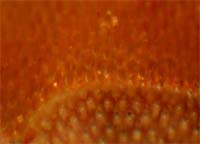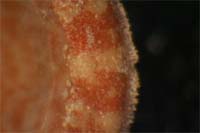Probably one of the most unusual molluscan groups in appearance, chitons have eight shell plates in linear arrangement surrounded by a fleshy girdle. The field trip to Skye gave a good opportunity to see five species which are frequently encountered in the intertidal. As a group they often present difficulties with identification. Look carefully in particular at the detail on the valve and girdle surface. It is hoped that the images of Skye chiton specimens accompanying this short article, which also highlights the key features which may be useful in distinguishing species, will augment the information provided in the Jones & Baxter Synopsis (1987) which provides keys, descriptive text and line drawings for the 11 species which occur on the continental shelf of the British Isles.
Reference: Jones, AM & Baxter JM (1987) Molluscs: Caudofoveata, Solenogastres, Polyplacophora and Scaphopoda. Synopses of the British Fauna No. 37.
Illustrated specimens are from Strollamus and Camus Crois, Skye (Photos by Peter Topley).
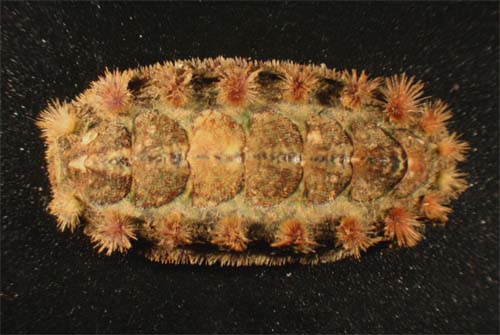 |
Acanthochitona crinitus (length <34mm) - 18 tufts of bristles distributed around the girdle - Tear drop shaped granulations on the valve surface |
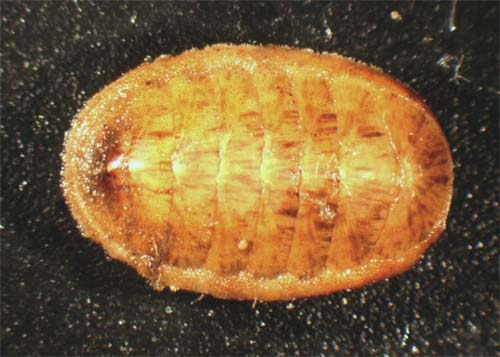 |
Leptochiton asellus (length <19mm) Fairly common species in the subtidal extending to the very low shore - Linear sculpturing of the valve surface - Intermediate valves have a more angled ‘keel’ rather than being rounded as in cancellatus and scabridus |
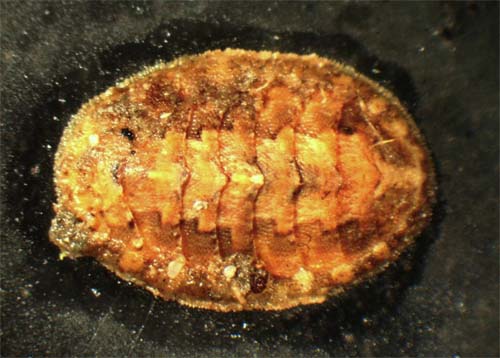 |
Lepidochitona cinereus (length <28mm) Commonest intertidal chiton often found quite high up the shore. - No linear sculpturing of the valve surface - Fairly course sculpturing of both the valve surface and girdle Colouring highly variable |
 |
Callochiton septemvalvis (length <32mm) - Valve surface appears slightly granular - Girdle has a snake -skin like appearance (below)
|
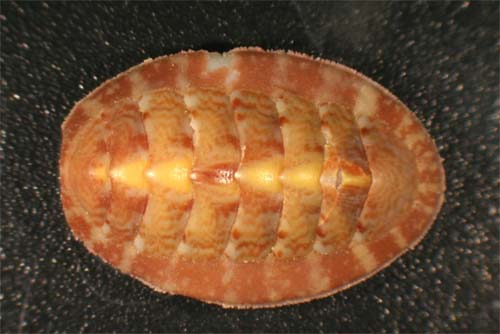 |
Tonicella rubra (length<21mm - Valves are almost completely smooth - Girdle covered with small circular granules (below)
|

